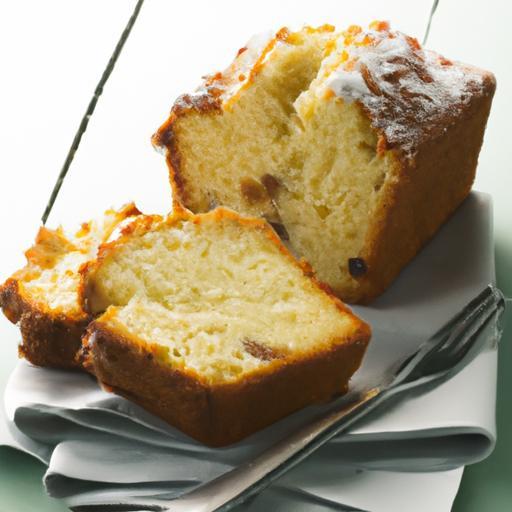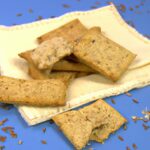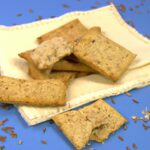There’s something irresistibly magical about a cake that rises like a cloud-soft, airy, and light enough to float off your fork. But crafting that perfect fluffy texture without gluten often feels like chasing a delicate dream. Enter the world of gluten-free baking, where science meets artistry, and a handful of clever secrets can transform humble ingredients into a masterpiece of moistness and lift. In this article, we unravel the mysteries behind fluffy gluten-free cakes, revealing expert tips and essential techniques to help you achieve those picture-perfect, light bakes every time. Whether you’re a seasoned baker or just starting your gluten-free journey, get ready to elevate your cakes from dense to dreamily delightful.
Fluffy gluten-free cake is not just a delightful treat; it embodies a delicate balance of science and craft to achieve the perfect airy texture often elusive in gluten-free baking. Derived from a blend of carefully chosen flours and moisture management techniques, this cake delivers tenderness and lightness that rivals its wheat-based counterparts. My journey to mastering this recipe started with endless experiments and understanding the intricate behavior of gluten-free ingredients, transforming the baking experience into an inspired culinary adventure.
Prep and Cook Time
- Preparation: 20 minutes
- Cooking: 30-35 minutes
- Total Time: 50-55 minutes
Yield
- Serves: 8 generous slices
Difficulty Level
- Medium – perfect for bakers ready to elevate gluten-free skills
Ingredients
- 1 cup gluten-free all-purpose flour blend (preferably with xanthan gum included)
- 1/2 cup almond flour, finely ground
- 1/4 cup cornstarch
- 1 tsp baking powder, gluten-free
- 1/4 tsp baking soda
- 1/4 tsp fine sea salt
- 3/4 cup granulated sugar
- 3 large eggs, room temperature
- 1/2 cup buttermilk, room temperature (or dairy-free alternative)
- 1/4 cup melted coconut oil or unsalted butter
- 1 tsp pure vanilla extract
- 1 tsp apple cider vinegar
Instructions
- Preheat your oven to 350°F (175°C). Grease and line an 8-inch round cake pan with parchment paper to ensure easy release.
- Mix dry ingredients: In a medium bowl, sift together the gluten-free all-purpose blend, almond flour, cornstarch, baking powder, baking soda, and salt. Whisk to distribute evenly, creating a uniform base for light texture.
- Beat eggs and sugar: In a large bowl, whisk the eggs and granulated sugar vigorously until pale and thickened-this aeration is crucial for fluffiness.
- Add liquids: Slowly drizzle in the buttermilk, melted coconut oil, vanilla extract, and apple cider vinegar. Mix gently until combined but do not overbeat.
- Combine dry and wet: Using a spatula, fold the dry ingredients into the wet mixture in three additions. Fold lightly to preserve air bubbles while ensuring full incorporation.
- Pour and smooth: Transfer the batter into the prepared pan and smooth the surface with a spatula. Try not to disturb the airiness.
- Bake: Place in the oven and bake for 30-35 minutes. Check doneness by inserting a toothpick in the center; it should come out clean or with just a few moist crumbs.
- Cool completely: Allow the cake to cool in the pan for 10 minutes before transferring to a wire rack. Cooling fully is essential to maintain its tender crumb.
Tips for Success
- Flour blends: Choose a gluten-free flour blend that contains a mix of rice flour, tapioca starch, and potato starch to mimic wheat’s elasticity and lightness. Adding almond flour enhances moisture and structure.
- Moisture balance: The buttermilk acidifies the batter, activating leavening agents for lift, while coconut oil or butter adds richness without heaviness.
- Egg handling: Ensure eggs are at room temperature for optimal volume when whipped; cold eggs won’t hold air as effectively.
- Avoid overmixing: Folding gently maintains trapped air bubbles that yield an airy, tender crumb.
- Make ahead: This cake tastes even better the next day. Store tightly wrapped at room temperature for up to 3 days or freeze for longer preservation.
Serving Suggestions
This fluffy gluten-free cake shines when adorned with a light dusting of powdered sugar or a dollop of freshly whipped cream infused with vanilla. Fresh berries like raspberries or blueberries add a tangy contrast and a pop of color. For a more indulgent touch, drizzle with a vibrant berry coulis or a smooth chocolate ganache. Serve with a cup of freshly brewed coffee or herbal tea to complete the sensory experience.
| Nutrient | Per Serving |
|---|---|
| Calories | 270 kcal |
| Protein | 5 g |
| Carbohydrates | 32 g |
| Fat | 13 g |
For more on gluten-free baking mastery, check out our Complete Gluten-Free Baking Guide. Dive deeper into the science of flour blends on Celiac Disease Foundation.

Q&A
Q&A: Fluffy Gluten-Free Cake – Secrets to Perfect, Light Bakes
Q1: Why is it so challenging to bake a fluffy gluten-free cake?
A: Gluten is the natural protein in wheat that gives traditional cakes their structure and elasticity. Without gluten, the batter can turn dense or crumbly. Achieving fluffiness requires replacing gluten’s binding power with clever combinations of alternative flours, starches, and sometimes added gums or eggs to mimic that airy texture.
Q2: What’s the magic flour mix for a light gluten-free cake?
A: The secret often lies in blending several flours. A mix of rice flour, tapioca starch, and potato starch is a classic trio for fluffiness. Rice flour provides structure, tapioca starch gives a chewy, elastic quality, and potato starch adds moisture and tenderness. Balancing these in the right proportions is key to a perfect crumb.
Q3: How do eggs contribute to fluffiness in gluten-free cakes?
A: Eggs are multitaskers-they add moisture, bind ingredients together, and most importantly, trap air when beaten, which expands during baking to create lift. Some recipes call for whipping egg whites separately and folding them in gently to maximize volume and airiness.
Q4: Can the right leavening agents make a difference?
A: Absolutely! Using a combination of baking powder and baking soda helps create a fine, even crumb structure. These agents release gases that cause the batter to rise and form those coveted tiny air pockets, resulting in lightness. Fresh, properly measured leavening is essential to avoid heavy, flat cakes.
Q5: Are there any secret ingredients to enhance texture?
A: Yes, ingredients like xanthan gum or guar gum are often added in small amounts to improve elasticity and prevent crumbling without weighing the cake down. Additionally, a splash of buttermilk or vinegar can react with baking soda for extra lift and tenderness.
Q6: How important is mixing technique in gluten-free baking?
A: Very! Over-mixing can lead to a dense cake, while under-mixing may cause uneven texture. Gently folding ingredients together after incorporating air (like whipped egg whites) helps keep the batter light and airy. Patience and a delicate hand are part of the secret recipe.
Q7: What baking tips ensure a perfect rise and moist crumb?
A: Use the right pan size, preheat the oven thoroughly, and avoid opening the oven door early to keep steady heat. Also, don’t overbake; gluten-free cakes can dry out quickly. Check doneness with a toothpick and remove the cake once it comes out clean but still moist.
Q8: Can I customize flavors without losing fluffiness?
A: Absolutely! Vanilla, citrus zest, cocoa powder, and spices all blend beautifully with gluten-free bases. Just remember to adjust wet and dry ingredients if you add heavy or liquid flavorings to maintain the batter’s consistency.
Q9: What’s a simple test to know if my gluten-free cake is perfectly fluffy?
A: Look for a cake that springs back gently when pressed and has an evenly aerated crumb with tiny holes. It should feel light when you pick it up-in other words, a cloud of deliciousness, not a brick!
Q10: Can I make a gluten-free cake in advance?
A: Yes, but store it properly! Wrap it tightly in plastic wrap or an airtight container and refrigerate for up to three days. Before serving, bring it to room temperature or gently warm it to revive softness and flavor.
With these secrets unlocked, your gluten-free baking adventures will soar to new fluffy heights!
In Conclusion
As you embark on your gluten-free baking journey, remember that creating a fluffy cake is as much an art as it is a science. By mastering the key secrets-choosing the right blend of flours, balancing moisture with precision, and embracing gentle mixing techniques-you unlock a world where every bite is light, tender, and utterly satisfying. With these insights in hand, your gluten-free cakes will no longer just be an option but a celebration of texture and flavor. So go ahead, whisk with confidence, bake with joy, and savor the sweet success of perfectly airy, gluten-free delights every time.








